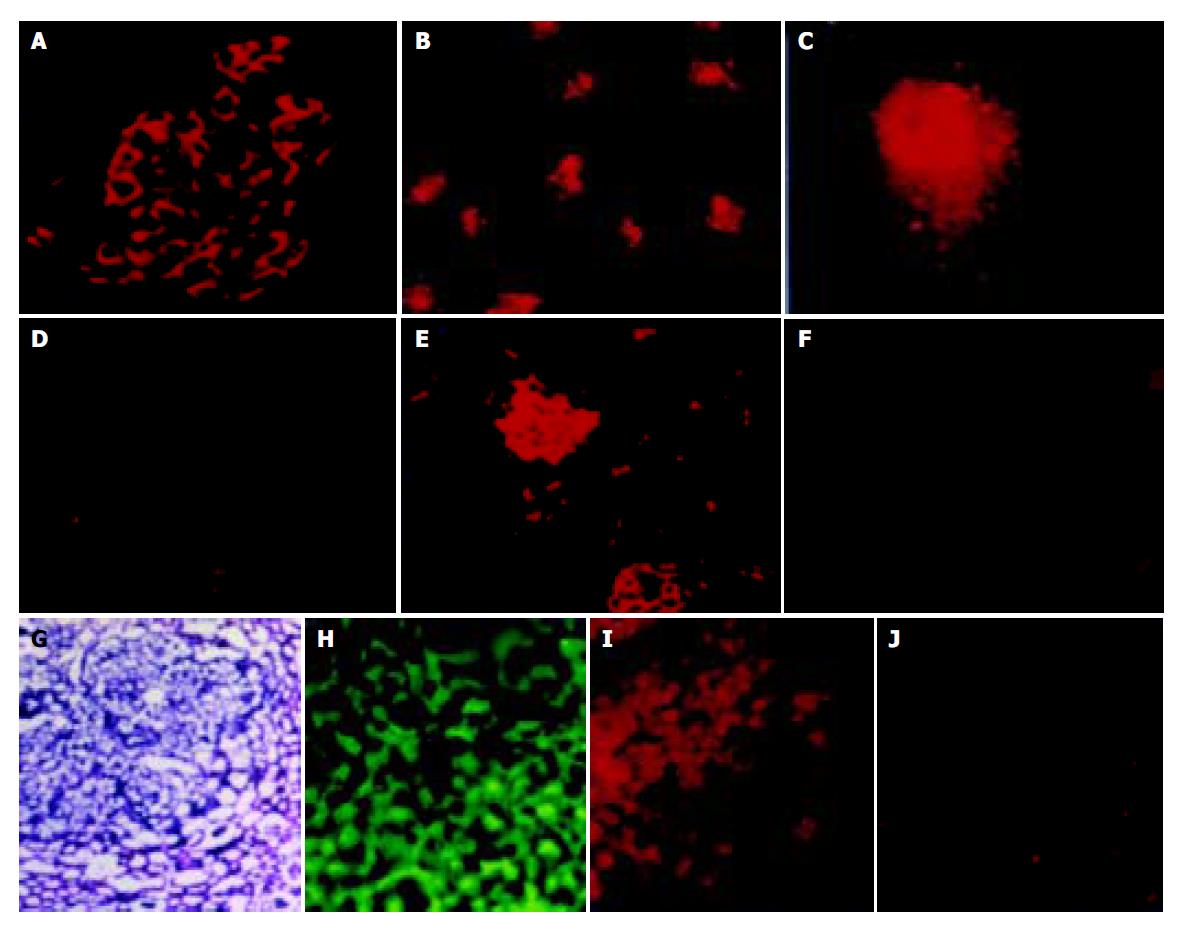Copyright
©2005 Baishideng Publishing Group Inc.
World J Gastroenterol. Apr 21, 2005; 11(15): 2277-2282
Published online Apr 21, 2005. doi: 10.3748/wjg.v11.i15.2277
Published online Apr 21, 2005. doi: 10.3748/wjg.v11.i15.2277
Figure 2 In situ immunostaining analysis of PDX-1+HepG2 cells in culture and after transplantation into nude mice.
Representatives are shown (original magnification 200×, unless otherwise stated). Anti-PDX-1 fluorescence stains cultured PDX-1+HepG2 cells (B), compared to 24-wk human fetal pancreatic islets (A). The ectopically expressed PDX-1 protein locates mainly within nuclear region (C, 400×). Parental HepG2 cells serve as a negative control (D). Anti-insulin fluorescence immunostaining indicates positive staining in human islet positive control (E) but not in PDX-1+HepG2 cells (F). H&E staining reveals implanted PDX-1+HepG2 cells in section of kidney (G, 100×), indicating that these cells infiltrated into nephric tissues and underwent proliferation. Anti-human nuclei antibody staining confirmed that these cells were of human origin (H, green cells). Anti-PDX-1 staining of mice kidney sections showed consistent expression of PDX-1 transgene in these implanted PDX-1+HepG2 cells (I), but insulin expression was absent (J).
- Citation: Lu S, Wang WP, Wang XF, Zheng ZM, Chen P, Ma KT, Zhou CY. Heterogeneity in predisposition of hepatic cells to be induced into pancreatic endocrine cells by PDX-1. World J Gastroenterol 2005; 11(15): 2277-2282
- URL: https://www.wjgnet.com/1007-9327/full/v11/i15/2277.htm
- DOI: https://dx.doi.org/10.3748/wjg.v11.i15.2277









